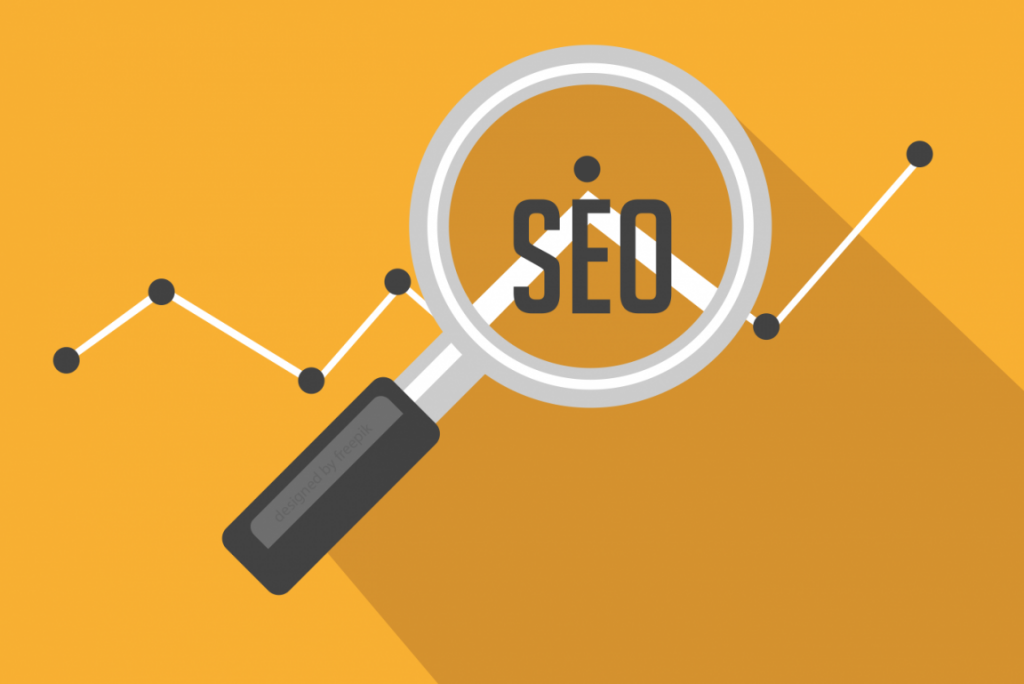The following article should be an aid to all website operators who want to help their site to a better ranking on Google and other search engines. The basis for this is Google’s introduction to search engine optimization. Based on this guide basic tips are given to achieve a better ranking in search engines. It also explains, in particular, which points are not taken into account in the guide by Google.
Since the topic of search engine optimization is a very extensive, this guide is not an all-inclusive handbook and above all does not guarantee a good ranking. Rather, it is to be understood as a jump-start for successful SEO, which should clarify the main features of this discipline.

Table of Contents:1. Indexing, Backlinks, Crawling 1.1 How to Work Search Engines 1.2 to be Found by Backlinks 1.3 Website for Submitting submission 1.4 Preventing Crawling of Specific Pages Understand2. How Do IMy Content for Google? 2.1 The Meta-Title should identify a web page such as a postal address 2.2 Meta-Description: the chance for a free ad 2.3 Other Important Tags for SEO 2.4 Simple and Rich Snippets3. The Hierarchy of a Website 3.1 The Home Page as the Center of Navigation 3.2 Navigation Paths and Sitemap 3.3 Ensuring clarity for the user 3.4 Dangers of an unkempt hierarchy structure4. Strategy Keyword 4.1 What is the meaning of the term keyword? 4.2 Keyword Selection Goalsowners 4.3 How do website find the best keywords? 4.4 Free Webmaster Tools for Keyword Research5. The Content of a Website 5.1 Readable Texts Are Recompensed 5.2 Long Texts Are More Popular, Not Necessary 5.3 Keyword Density Correcting Optimizing 5.4Internal Links6.Images 6.1 Alt Attribute, File Name, and Format 6.2 Compress Large Images 6.3 Positioning Images 6.4 Selecting Images7. Mobile First: How to Optimize Your Website for device Customization Mobile 7.1 Mobile FirstMobile 7.2 Different Types of 7.3 Mobile Layout Specifics 7.4 Visible Content Counts 7.5 Voice Search8. Website Known Doing: Learning Interaction 8.1 Expanding Social Networking 8.2 Getting Acquainted with Users and Customers 8.3 Link Sharing Programs9. Analysis Tools 9.1 What Analytics Tools Does Google Suggest? 9.2 Which analysis tools should be mentioned in the SEO Guide? 9.3 Alternatives to Google & Co's Analysis Tools
1. SEO Guide Conclusion – Indexing, backlinks, crawling
The Google Guide will show, among other things, how to get your website indexed in the Google index and ensure proper crawling. In our SEO Guide, we briefly and concisely present what options Google provides for your website to appear in search results and how to start search engine optimization.
1.1 How search engines work
Search engines use crawlers, also called bots, whose task is to analyze web pages. Crawlers basically behave like normal internet users. You follow the links from websites to get to another page. They repeat this process again and again. In rarer cases, the crawlers do not follow a link but re-start on a random web page. This prevents crawlers from always moving within the same domain. This would be the case if there are only internal links on a domain.
Based on an analysis, the search engine decides whether the checked-in page will be included in the index (ie the search results page). Metadata and keywords help the crawler understand what a page is about. Using a special algorithm, the search engine then outputs a result list that should provide the user with the best possible results for his search query.
http://www.wavemakers.co/blog/how-search-engines-work/

1.2 to be found by backlinks
Links lead not only to subpages but also to external websites. If someone places a link to your website on an already indexed page, chances are good that search engines will send bots to your online presence. Links with other sites are one way to make Google and Co. find you.
You can use good content to help other website owners get noticed and link to your website. Backlinks are not only useful to be found by Google. They are also a good measure for better rankings (more under “advanced tips”).

In addition to the tips from the Google Guide, there are other things to keep in mind. Links from external websites can contribute to the ranking. Therefore, ensure a steady and organic link building. Organic links are provided by good content. Avoid automatic link building. This method is recognized by search engines as fraud and can lead to strong Ranking losses. Also, pay attention to the link quality. A few strong links are better than many weak links. Strong links are those that come from thematically relevant content and well-rated sites. Links of authority pages in the respective subject area are considered to be particularly effective.
According to suchhafenseoagentur.de, if you take these SEO tips into account, your website will not only appear on the search engine index. If you start with effective search engine optimization for better rankings and visitor numbers, you’ll be able to charge ahead in local and international markets.
1.3 Submit website for inclusion
Google provides Search Console. Under https://www.google.com/webmasters/tools/submit-url?hl=de If the homepage has a correct link to subpages, all your pages should be found by the bots. For complex websites with many subpages, a sitemap should be submitted. To do this, you’ll need to create a Search Console account at https://google.com/webmasters/, add your website, and submit the sitemap. A short time later, Google sends out its bots to scan your pages. However, inclusion in the index can also be rejected by Google.
How to create and optimize an XML Sitemap is in our blog post explained easy and understandable.
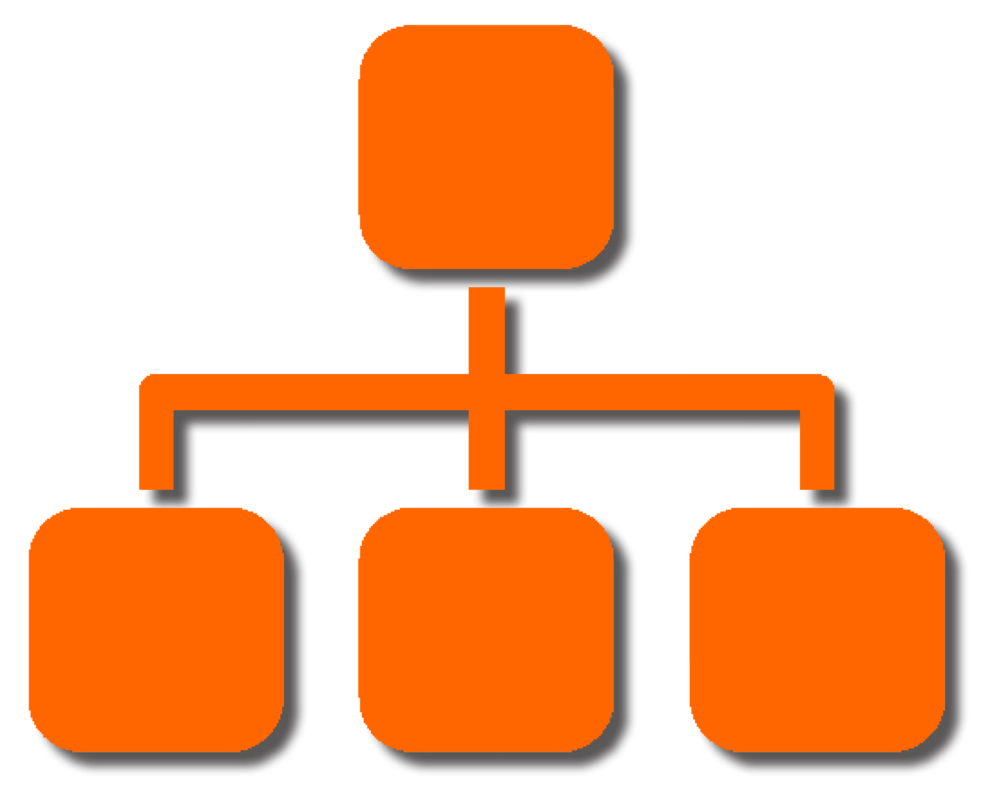
Since the robots.txt is the first file a crawler retrieves, the XML sitemap should also be stored here. So Google gets a direct overview of the content of the page.
1.4 Prevent crawling of specific pages
Sometimes bots are unwanted. Include subpages Information that should not appear in search results on Google and Co., you can robots.txt use to prevent crawling. This file is placed in the root directory (example.com/robots.txt) of your website and contains instructions for bots. Properly formulated instructions can exclude certain areas of your Internet presence from crawling. To make it easier to create an appropriate robots.txt, there is a generator in Search Console. You may also use other free robots.txt generators such as this one.
However, robots.txt cannot prevent 100% crawling of a site. For example, if there is a direct backlink to a page, or if the page has already been indexed before it has been locked by robots.txt, it may also appear in the index despite the reference in the robots.txt file:
One method of preventing indexing that all major search engines use is the noindex value. This is added to the corresponding pages as a meta tag:
<meta name= "robots" content= "noindex" />
This statement states that search engines are not allowed to include the correspondingly excellent page in their index. In the course, the value “nofollow” can be used. It prevents the crawlers from following the links of the page.

It can be useful to prevent indexing if duplicate content is to be avoided. Otherwise, Google could pronounce so-called penalties that hurt the ranking of a page.
Tip: Keep in mind that bots from reputable vendors adhere to these instructions, but you’ll also have to expect malicious crawlers that will ignore them. Curious users could also open the robots.txt file and search for excluded pages, as they can still be opened through the browser. These methods are there for you to determine what should not appear in the search results. If you need real security, you should include an authorization option such as password protection.
2. How do I make my content understandable to Google?

In the section “Google (and users) to understand your content”, the search engine operator’s SEO guide deals in detail with the specific tags Meta-Title and Meta-Description as well as the snippets, which appear as short synopses in search results.
2.1 The meta-title should identify a website as a postal address
Meta tags belong as metadata of a web page in the head (“<head>”) of the file. Google recommends creating an individual and meaningful title for each page. This should sound natural and summarize the page content aptly. Advantageous, optional additional information is the name of the page or a company name and location as well as the main focus of the offer.
A no-go is headings without any reference to the content and generic titles, as they are created by editing programs when opening a new page. Although Google’s SEO introduction does not fundamentally reject duplicate headings on different websites, it explicitly cites the use of the same title on many or all pages of a site as “avoidable”.
Brevity is the soul of wit
Finally, in the Meta-Title section, Google goes a long way, cautioning against too long headlines and overloading with superfluous keywords. While Google prefers to use the content of the title tags when listing in SERPs, it will shorten or replace them if they appear too long or irrelevant. The meta-title should therefore not exceed a length of about 60 characters. The snippet generator from Sistrix helps to optimize snippets and shows how Google users see a search hit on the page in question.
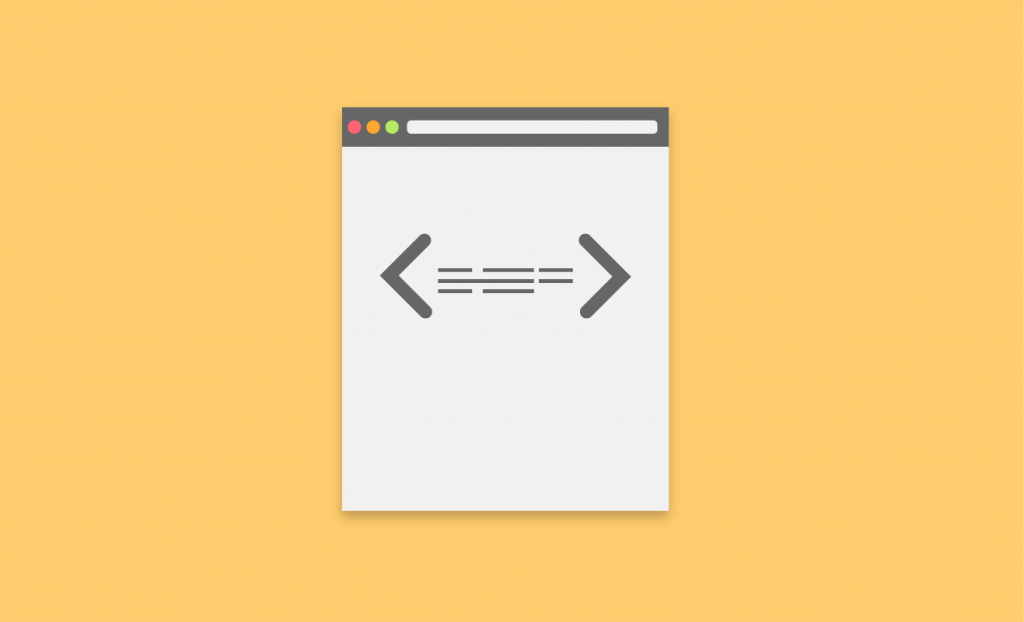
tip: Google Search Console lets you review and compare the click-through rate of various meta-titles.
2.2 SEO meta-description: the chance for a free ad
On the short page description in the meta-description, Google’s SEO guide first goes in with the note that its quality is verifiable with the search console of the search engine operator. It identifies overly long or short meta-descriptions as well as over-copied entries. Then, the SEO Guide shows the benefit of using the optional meta tag, which the search engine takes as the snippet source, and points to further contributions to optimizing meta-description and snippets.
Best Practices and No-Gos
In the Best Practices section, Google recommends formulating the content of the tag to inform and interest the search engine user. More specifically, this can be formulated in such a way that the meta description contains a call-to-action and should briefly inform the user what awaits him on the linked website. In the SERPs, it has the task of an advertisement, which should cause the searcher to visit the website.
Furthermore, the guideline goes into the length of the meta description, the limits of which are not universally numbered, since these depend on the individual boundary conditions of a search query. Generally, a number of 300 characters is the maximum length that should be used.

The list of no-gos for meta-description first duplicates the entries mentioned in the meta-title. In addition, it prohibits meta-tag content that consists solely of keywords or duplicates the entire textual content of the website. Finally, the guide explains why meta-descriptions should be created individually for each website and alerts on using the same description for all or many pages.
Tip: If you already advertise on Google Ads, you can check which ads are clicked more often and adapt that content for the meta titles and descriptions.
2.3 Other important tags for SEO
Although the headline tags h1, h2, h3, and the like are not meta tags, they are also important to search engine optimization. The Google SEO Guide recommends using these tags to create a hierarchical structure in the form of a structure of the website text that reflects its main content and sub-topics. He warns against abusing headline tags for text tags that have no relationship to the textual structure. For example, h tags should only be used on content and not useless in the footer.

For the headings, the weighting of the hierarchy is crucial. The h1 is given a higher weighting than the h3 headline, and so on. If possible, use an important keyword in the relevant headings.
2.4 Simple and Rich Snippets
The textual snippets displayed in SERPs are already mentioned in the meta description in this SEO guideline. But Google’s guide goes into another type of snippet, which is specified using so-called structured data. These also serve to provide metadata that search engines can evaluate, but offer further possibilities, in particular, the referencing of attractive multimedia contents.
Google uses such rich snippets to enhance search results with additional information. You qualify a website but also for special features such as star ratings. Google offers several tools with which Structured Data or Rich Snippets can be checked, but can also be tried without changing the website source code.

The rich Rich Snippet Testing Tool from Google can be used to check the creation of rich snippets.
Good-looking rich snippets will help you find your search results better, which may increase your clickthrough rate.
3. The hierarchy of a website
Whether the initial presentation or comprehensive redesign of an existing website: the planning of the basic structure is an essential preliminary measure. This foundation is intended to sustain all future changes on the site: the structure and hierarchy of the site. A solid concept, taking into account a handful of rules, saves you a lot of subsequent patchworks and thus a lot of trouble.
3.1 The homepage as the center of the navigation
For this hierarchical structure, the introduction to Google search engine optimization has useful and comprehensible advice ready – Dos and Dont’s, which help you as the creator and operator of a website to realize the project. Beginning is the start page – from here you generate the navigation structure. In its introductory SEO tips, Google recommends building up organically meaningful hierarchies: always from the general, the gross to the concrete, special. On the one hand, a coherent order should be recognizable, on the other hand, it should be ensured that the folder structure is as uncomplicated as possible. Too deeply branched subdirectories carry the danger that the overview is lost. From the start page, every content should be accessible with just a few clicks.

3.2 Navigation Paths and Sitemap
Similarly, Google suggests setting up breadcrumb navigation paths – so visitors always know which hierarchical level they are on. Navigation paths thus strengthen usability.
The breadcrumbs of a page can also be distinguished by structured data – this makes it easier for search engine crawlers to properly track the hierarchy of the website. In addition, Google advocates the submission of the XML sitemap mentioned above – this facilitates the search engine orientation and is, therefore, conducive to the indexing of pages in lower placed ranks. However, experience has shown that submitting an XML Sitemap is only useful for large websites with more than 5,000 URLs. It’s still worth keeping Google’s introductory SEO tips in mind when planning and building.
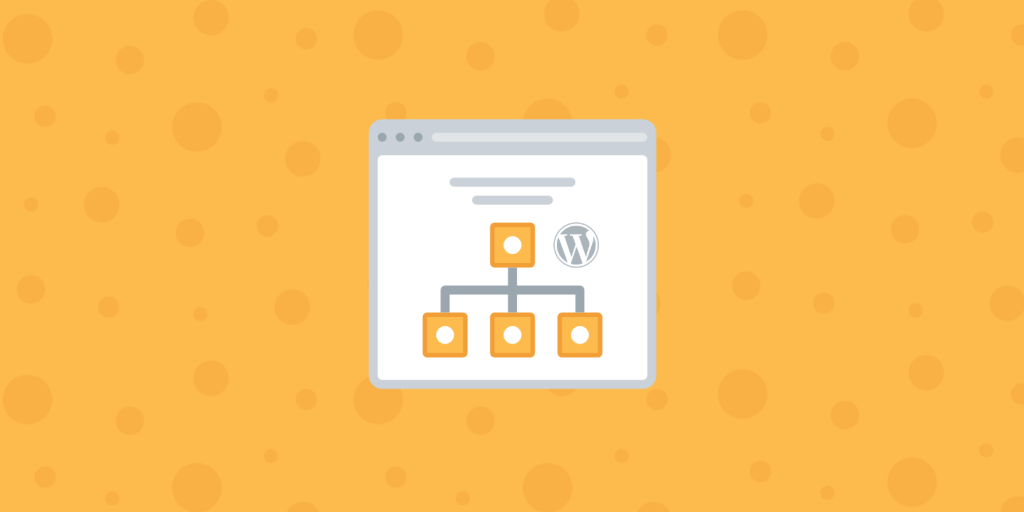
3.3 Ensure clarity for the user
A careful conception is key to the success of your website. Their main topic usually marks the starting point of the hierarchical structure; for commercial websites, it is usually the corporate object. Starting from the start page, it is important to define main categories and subcategories that have decreasing relevance in a descending hierarchy. Prefer flat hierarchies: The less you measure the number of sublevels (directory depth), the easier it will be for both your visitors and the search engines.
Especially for large websites with many URLs, the user experience suffers very quickly. Therefore, attention should be paid to a low click path depth. The click path depth indicates the number of clicks needed to reach a specific subpage.

Name directory levels and categories using thematically plausible keywords. Make sure that one and the same keyword is not accumulated, for example, in a URL several times (www.example.de/keyword/keyword_123/keyword_abc). When creating your directories, select short words and terms that are related to the topic: Search engine hits show the first words of a URL – so the visitor receives information about the page content before clicking.
Tip: Use the Rich Snippet breadcrumbs. It is displayed in the search hit instead of the URL and serves for a better overview.
3.4 Dangers of an unkempt hierarchical structure
Dont’s that are detrimental to the successful launch of your website: nonsense nested directory structures, negligent navigation with sloppy internal linking: The emergence of wild URLs can lead to duplicate content and subsequently to devaluation by the search engines. Google and Co. stick to clear quality standards – stop the uncontrollable proliferation of unintentional URLs by taking the necessary care from the start. Careful with a hierarchically comprehensible structure, care with your talking and topic-related filenames. The consistent opinion of many experts: The time you invest in this organizational preparatory work will pay off.
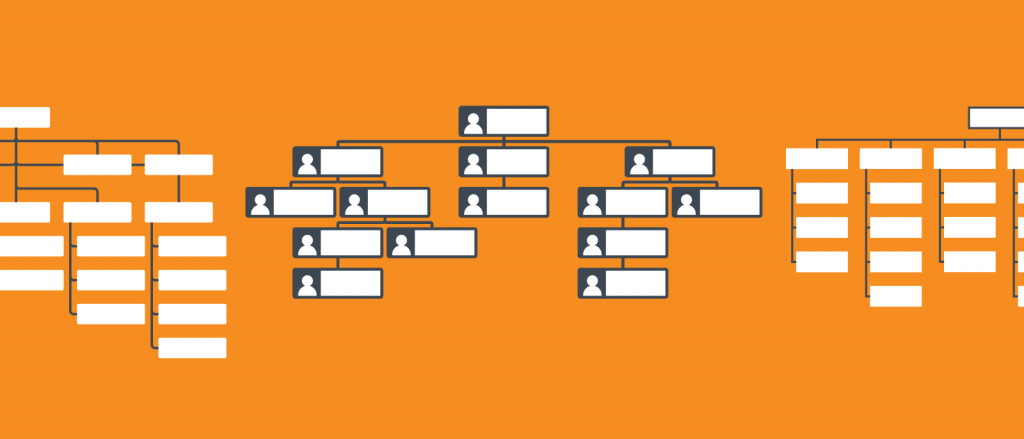
With the design of the page structure and a hierarchical structure, you create a solid basis for all further activities. Search engines follow user behavior – heed this point. While not disregarding search engine algorithms, be mindful of the people who navigate your pages. Trends and search behavior are changing and algorithms are following these trends. With a strong foundation, you can flexibly adapt your own appearance to new external circumstances.
4. Keyword Strategy for more effective Search Engine Optimization

This part of our SEO Guide outlines the goals of choosing specific keywords, how to find the optimal keywords based on strategy, and what tools are available to webmasters and SEOs for keyword research. The Google Guide does not cover this topic.
4.1 What is the meaning of the term keyword?
It’s important to know that the term “keyword” describes two different things. On the one hand, meaningful words or phrases that describe the content of a text are called keywords. Second, a keyword is any word entered by a user into a search engine to start an online search.

4.2 The objectives of the keyword choice
By targeting specific keywords through various search engine marketing techniques, website owners can improve their chances of being placed high in the search engine results lists. In general, keywords are essential to allow Google & Co’s website to be indexed to a specific topic and displayed when queried about it. The choice of relevant keywords is a prerequisite for the highest possible traffic and, consequently, for the economic success of a website and the company behind it.

4.3 How do website owners find the optimal keywords?
At the beginning of the keyword research is the definition, which goal with a web page to be reached. It does not matter if products or services are sold, or if visitors should subscribe to a newsletter or request information. All these can be the goals of a website. It is always important that the keywords describe the content of a page as precisely as possible.
The second important step is to find out the search intention and user intention with suitable tools. That is, to understand how and why search engine users are looking for. The differences are important to Google. The search engine delivers different results on the same topic, depending on, for example, whether someone wants to buy something or just seeks information. Depending on the intention of the users, a distinction is made between five types of keywords.
These are:
- Informational: The user searches for information, “good bike tours in Mallorca”
- egTransactional: The user has a purchase intention, eg “red ballerinas in size 38”, “buy ballerinas”
- Navigational: The user uses the search engine as navigation and eg searches directly for “Zalando.de”
- brand keywords: combinations with the brand, eg “s.Oliver T-Shirts”
Tip: Enter your keywords in the search mask on Google. On the basis of the displayed search results, you will immediately see, for example, whether online shops are listed or informative contents of magazines or blogs.

Hardly any SEO Guide mentions that webmasters have to consider regional differences in keywords depending on how the site is targeted. An example: in Berlin, meatballs are eaten. In the west of the country they are called meatballs and in Baden-Württemberg meat kitchens. In Bavaria meatballs finally, turn into meatballs.
Additional valuable keyword selection information is provided to webmasters through an analysis of which keywords competitors rank in Google’s search results. Free tools help SEOs and webmasters with keyword research and help to develop new ideas for an individual keyword strategy.
4.4 Free webmaster tools for keyword research
- Google Keyword Planner:
The first recommendation in our SEO Guide is the Google Keyword Planner. This tool was designed for paid ad campaigns using Google AdWords. Nevertheless, the keyword planner can be used for SEO or content marketing campaigns. After entering phrases or keywords relevant to a webpage, the tool will provide information search volume for those keywords and competitive information.

- Moz Keyword Explorer:
The information provided by Moz Keyword Explorer is similar to the one found in Google’s Keyword Planner. However, it is claimed that they are more accurate as Google completes its data and is not as thorough in its evaluation. The tool provides more detailed keyword recommendations and qualitatively evaluates the cumulative value of each keyword entered.

- Hypersuggest:
The strength of Hypersuggest is to help SEOs and webmasters develop new keyword ideas. Simply enter a search query into the Hypersuggest search engine and the free Keyword Tool will compile a list of dozens of keyword suggestions. These are not recommended based on search volume, competition, or potential value, but help to develop more specific, relevant, and diverse ideas for a campaign. In particular, if webmasters with keyword research are not yet very familiar, Hypersuggest is an indispensable tool.
tip: More tools with applications and descriptions can be found in our article “Free SEO Tools”.
5. The content of a website
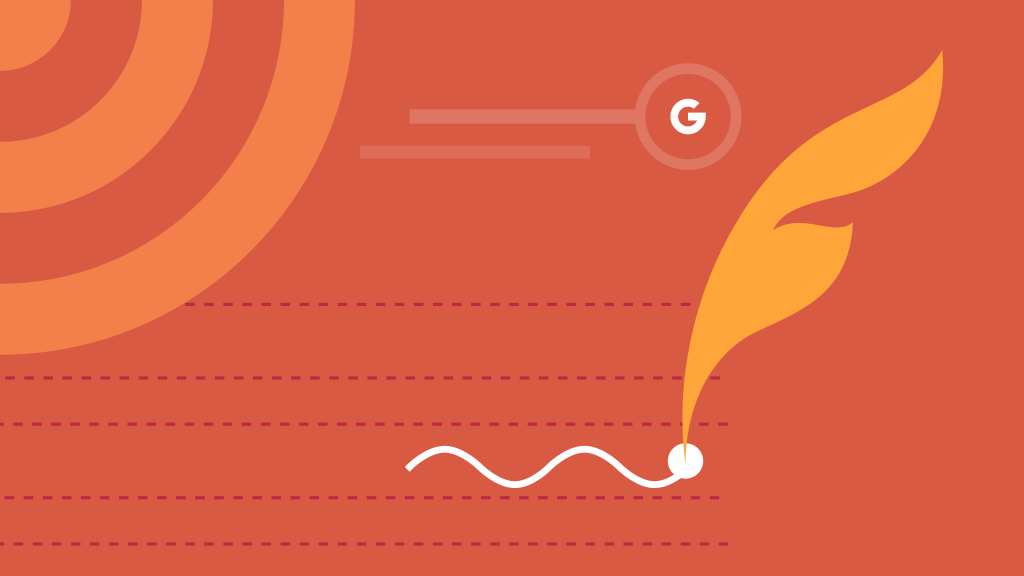
Search engines have developed strongly in recent years. It is no longer enough to construct content according to scheme F in order to rank well. In the meantime, especially websites that are useful for human visitors are rated positively. Well-prepared texts with a high information density are a start. But what matters is that the contribution has something to offer readers. This section of the SEO Guideline is therefore about the question: How can the content of a website be optimized?
5.1 Readable texts are rewarded
According to Google’s search engine optimization, text with real added value is likely to have the biggest impact on a website’s ranking. High-quality content makes readers like sharing them with friends and colleagues. This makes sense: one does not want to bore his environment, but to pass on valuable and well-presented information. A great article is therefore readily shared through social media, apps or e-mail. You link it to forums and blogs as a good source of information. Or you tell other people in general from the great website with the readable articles. This natural way of distributing content has a positive effect on the reputation of a website – even on search engines.
However, one-time keyword creation is not enough for a keyword. It should be checked by means of a suitable tool constantly, how the ranking develops for a keyword. So it can be understood, which page for a keyword ranks and which content is responsible for which changes. If the ranking worsens, you can immediately react with new content and observe the effect again. You can, for example, check the ranking development for free via the OSG Performance Suite App.
Recommended:
- News: The attraction of the new also applies to content on the Internet. Texts are much more interesting if they contain new information or are uniquely formulated.
- Target group-oriented texts: Different keywords on the same topic sometimes attract very different target groups with widely differing previous knowledge. SEO experts advise: The texts should be designed so that they serve the respective group in the best possible way.
- One keyword per page: Each keyword should have its own landing page.
- Place keyword far ahead: The keyword should appear way up in the text. So everyone immediately (including the crawler) knows that the text is about the keyword.
- Inserting Greases: Greasing of important words and passages makes reading easier. That also likes Google. But do not add too many greases. This makes the text confusing.
To avoid:
- copy content: Duplicate content is to be avoided.
- Bad spelling and grammar: too many mistakes in the text disturb the flow of reading and appear unprofessional. That evaluates even content-appealing articles.
- No keyword spamming: The keyword should not be used too often. When reading the text, the keyword amount should not look unnaturally high.
- Write for the search engine: Texts should be written despite SEO for human readers.
5.2 Long texts are more popular, but not a must
For the optimal length of a text, the Google SEO Guide gives no tips. Presumably, this is because there is no “magic” word boundary. For a long time, SEO experts rated the length of 200-300 words as ideal. However, recent findings show that users tend to prefer longer content (see chart below). But make sure that the content is as high quality as possible. John Müller of Google Switzerland confirmed: There is no specific minimum length; rather, the quality of the content is crucial.

Check the text lengths of your competitors and create texts that are 10 – 30% longer.
Recommended:
- quality over quantity: Sometimes you can not say much about a topic. That’s fine! As long as the text offers added value and is well written, it has a good chance.
- Treating topics holistically: Readers prefer that they get as much information as possible in one go. Instead of many quick snacks, they would rather read a long text that sheds light on all the important aspects.
- Contents: The text is very long and covers many facets? Then a table of contents can help. Among other things, it provides a quick overview of the content of an article. If you also add a jump function, the navigation within the text is easier.
To avoid:
text artificially inflated: If all important has been mentioned, the text does not have to be extended to bending and breaking. Excessive fills, content repetition and empty phrases reduce the quality.
Beat the reader with text blocks: A good text is broken up by paragraphs, sub-headings, bulleted lists, tables or multimedia content. A meaningful structure makes every text more pleasant to read and easier to understand. He also looks interesting from the outset, as it is also visually appealing.
5.3 Keyword density
Keyword density is the percentage of keywords in the total word count. Logically, the likelihood that a text is relevant to a particular keyword is greater if that keyword appears at least once in the text than it does not appear.

However, a larger keyword density does not necessarily mean more relevance. For example, if a text is half of a keyword (keyword density of 50%), it’s unlikely to be informative for the reader. Therefore, too frequent occurrences of a word are penalized by Google with a bad ranking. This is to prevent the so-called keyword stuffing, which was often used in the past to achieve a good ranking.
Today, finding the optimal keyword frequency more often uses the WDF * IDF value than the keyword density, which is probably true for search engines. The components of this measure are the Within Document Frequency (WDF) and the Inverse Document Frequency (IDF). WDF refers to the number of words occurring in the text relative to the total number of words, while IDF refers to the number of pages in the index containing that word. Thus, the unique occurrence of a word in a text can already give an indication of high relevance. The prerequisite for this is that this word only appears in a very small proportion of all the websites of the index. The larger the WDF * IDF value, the higher the frequency of a word compared to other pages.
With seobility’s WDF * IDF tool, the first 10 search hits for a keyword can be analyzed. It will display the words with the highest WDF * IDF values. This can be helpful when it comes to setting the content of a page. However, not every one of these words should be built in, as many of them may not be related to the topic.
The screenshot below shows a WDF * IDF analysis of the search engine optimization keyword. Here, the term “search engine optimization” is the one with the highest average WDF IDF value followed by “SEO” and “Google.”
5.4 Label internal links correctly

In Google’s SEO Guide, the effective use of internal links also comes up. The key message is: Links should be provided with as meaningful a text as possible. This makes it easier for search engines to arrange the linked pages by topic. In addition, Google gives the following tips:
- Recommended:
Precise link texts: Optimal is a short link text that brings the topic of the linked article to the point.
Make Links Visible: Links should be different in color from the rest of the text
- To avoid:
Insignificant link text: Texts like “here” or “more” are not helpful.
- Long anchor text with overly many keywords:
In addition, not too many brand names should be linked on one page. This is unnatural. For external links, it may be useful to use the “nofollow” attribute to prevent the crawler from following this link.
6. SEO Image Optimization

In order to make your own website reader-friendly, you should also load your content with image material. However, the function of the images is not limited to that of accessories – they can do much more: Images contain a lot of SEO potential and optimizing images should be taken into account.
6.1 Alt attribute, file name, and format
Google’s introduction to search engine optimization provides practical tips for using images: Google recommends meaningful short descriptions as the alt attribute and short, apt-file names. The alt attribute (also alt tag) is used to describe images on web pages. For example, if an image can not be displayed due to technical issues, the text specified in the alt tag will appear instead. Even the search engines, the attribute information about the content of the image, because they can recognize this only partially independently. So also the appearance in the picture search is made possible. Likewise, the ranking in the SERPs can be improved by using alt tags.

Avoid generic file names that say nothing about the image content – for example, “image1.jpg” or “img1.png”. Also outlawed are overlong filenames and keyword stuffing in the alt tag. In addition, Google advises against using only images as navigation links. The guide suggests using common file formats such as JPEG, GIF, PNG, and BMP and recommends creating your own image sitemaps.
The short, meaningful file name does without umlauts and uppercase letters and contains the keyword – example “white-maeuse.jpg”. Separate words by a hyphen. The title tag that appears on mouseover can match the filename, but is written regularly for usability reasons – for example, “White Mice”. The alt tag, the image description, maybe longer – perfect for bringing in a long tail keyword.
6.2 Compress large images
Google mentioned file format and matching file name. In addition, image files should not unnecessarily increase the load time of the page: leave the file size should ideally be less than 150 kB. The layout of the Google Image Search has changed: Hits are displayed in high image quality and appropriate size – an advantage for larger images. Compress high-resolution images for the best ratio of file size and image dimensions. You can use graphics programs or online services like https://tinyjpg.com/ or http://optimizilla.com/de/. A 1024 px wide image is sufficient for Google’s new image search. Drag and drop images in portrait orientation.

Tip: Many content management systems, such as WordPress, offer plugins for image compression.
6.3 The positioning of images
Search engines pay attention to the correct positioning of the image – juxtaposed image and text elements should correspond contextually. So Google knows that the pictures are useful to the reader and do not deviate from the actual topic. Furthermore, the consistency of image files as an important ranking factor: A repeated use of different sub-pages is quite welcome – but note that you always use the same image file in the same context.
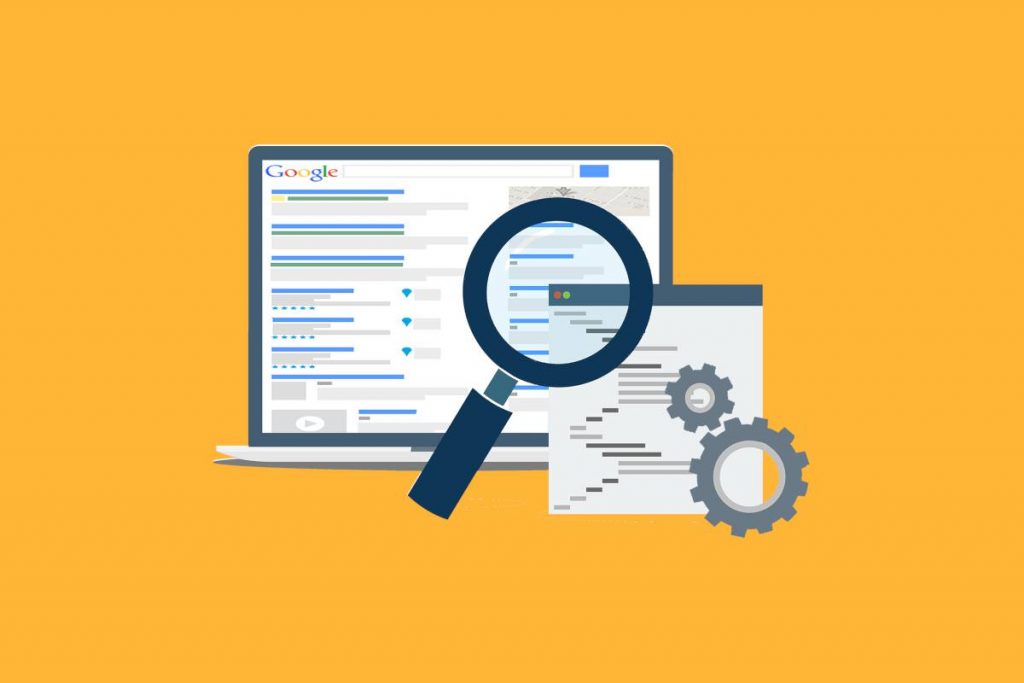
6.4 The selection of pictures
Own pictures are better eye-catchers than stereotypical stock photos. They are also suitable for branding in the form of watermarks, for example, your company logo. As an eye-catcher, infographics with added value have proven to be: In self-created infographics, there is considerable traffic potential. On clear stock photos should also be omitted, since Google now recognizes these very well (see pictures below) and preferred unique content.

2017 reshaped Google Image Search has detuned many website operators and a smaller update in 2018 has not changed anything: Google hits lead now only with a second click on “visits” directly to the page. Nevertheless, optimizing the image of every website operator continues to be an important and lucrative measure of Google search engine optimization.
tip: In our blog post image optimization in SEO we have summarized further optimization possibilities for you.
7. Mobile First: How to optimize your website for mobile use

Statistically speaking, the mobile use of the Internet in Germany already stood at 81% in 2016, and the trend is rising, according to the statistics service Destatis. The question of whether a mobile design is needed, so it is unnecessary. If your site is designed to attract and provide service to visitors, setting up a mobile design is essential.
7.1 Mobile First
As early as the end of 2016, Google began to establish its Mobile First Index as the main index. For developers, this means that only those who offer a website optimized for the Google SEO Guide for mobile devices can now be perfectly ranked. That’s why it’s worth revising existing layouts. The reference to this special algorithm is missing in the guide, unfortunately, while it makes up a large part of today’s ranking experience.

7.2 Different types of mobile device customization
When optimizing your mobile site, you can choose between different ways to customize it. The Google SEO Guide itself differentiates between responsive web design, dynamic delivery and the use of different URLs. The dynamic design is hardly used today. Responsive design and secondary URL have prevailed, with the responsive design gaining in terms of build speed. Using different URLs requires setting up a second website that takes into account the mobile design. The mobile website is redirected when a mobile device is detected. As a user, you usually recognize the third variant by them.URL forwarding (example: sz-online.de, spiegel.de / m.sz-online.de, m.spiegel.de).
Tip: There are no differences between m.domain.de and responsive design.

According to AdColony / Wirtschaftswoche, 90% of visitors browse today on smartphones and 10% on tablets, with 55% of Android devices outnumbering 45% Apple devices. Other mobile devices, which are also mentioned in the Google Guide, can, therefore, be neglected. But most users use apps instead of browsers. Investing in your own mobile app, which Google automatically suggests when opening a mobile website, can be very useful. The prerequisite is that the app has been indexed by Google.
7.3 Special features of mobile layouts
When setting up special mobile designs, developers should always keep an eye on the output device. Smartphone screens are much smaller, but today often display the same resolution as a desktop monitor. Responsive layouts are also often displayed on smart TVs or console screens. This means that developers simply can not know, how the user sees text and pictures. ResponsiveDesigns bring with them the great advantage of being able to independently adapt and recognize the presentation options. In most devices, the user can also independently adjust font sizes.

In addition to font and image size and the menu, mobile is displayed differently. Navigation bars become drop-down menus and drop-down box menus. The screenshot below shows the navigation bar of amazon.de (desktop version). The submenus will pop up automatically when you hover over a menu item. One click is not necessary. For example, the category page “Navigation” can be reached with just one click. Mobile, this technique is not feasible.
On the mobile side, this requires three “clicks”. However, Amazon sometimes uses drop-down menus, so not every click will load a new page. This saves time and possibly mobile data volume. This increases the user experience of a website.
7.4 Visible content counts
Google is not a fan of adblockers and therefore conceals: Adblocker often do not use mobile. If you have integrated advertising programs that may open pop-ups, you should consider this. If the visitor can not click away from the advertisement, he can not see the page content. Google even punishes this with lower rankings. Persistent ads can be excluded via the respective distributor. The build speed can be significantly improved by AMP tools. In case of doubt, you should regularly test your own website in order to evaluate your display errors and build speed yourself.

7.5 Voice Search
Meanwhile, many searches are made via voice input. This happens mainly via a mobile device but also increasingly through voice assistants. Already in May 2016, Google said that 20% of all search queries are submitted by voice search. This results in changes for search engine optimization because these types of requests are formulated differently than typed and approximate the normal language. They are longer and therefore often more precise. The (mobile) content should then no longer concentrate on individual keywords, but answer the questions of the searchers as well as possible.

Example of an oral search query: “In which fashion business in Munich is there big discounts right now?”
8. Promote Website: Learning to interact for SEM and SEO

A website is successful in terms of SEO requirements when it appears high up in the search for a relevant keyword in Google. Then a higher turnover through high traffic and thus new customers and prospects are possible. Backlinks and conscious sharing of the page links by customers increase the traffic and increase the rank. That’s why the Google SEO Guide advises you to get to know your own target group better. But is that enough?
8.1 Expand social networking
In social media such as Twitter, Facebook, but also Snapchat or Instagram, it’s about reaching as many people as possible with their own content. The same goal you pursue as an entrepreneur with your website. No wonder then that these two media not only complement each other but also condition. According to the Federal Statistics Office, in 2017, 41% of companies in Germany used networks such as Facebook, LinkedIn or Xing, and 7% services such as Twitter or Communote. About 14% shared their own content on YouTube, Picasa or their own podcast.

These figures show once again how far Germany has fallen behind in digital matters. According to MarketingSherpa, in 2017, 95% of US users agreed that they would use or already use social networks to follow brands they like. According to The Drum, 52% of Facebook users in 2017 were impacted by online leads and content in their shopping behavior. In 2014 it was still 36%. To Germany, this would mean around 15.5 million of the 31 million Facebook users who make their purchasing decisions based on which companies and brands they use online.
8.2 Get to know users and customers
Specifically, the Google SEO Guideline recommends website operators to learn how to use social media safely and to use it profitably for the website. What the guide does not mention is that you should ideally be watching, interacting, and using a private account yourself for a while. This avoids typical traps, such as spamming short links, which are distracting.

Google also advises not to push every new content, but rather to promote highlights. So while a new subpage on the site may be of no interest to visitors, a blog article series on specific topics about your business can attract new readers. A tip that will be particularly important if you do not know your target group yet. The get to know the target audience, which works particularly well on Facebook. A test ad that targetted a group of users who already “liked” the competition shows you who you are dealing with. Gender and age, online behavior and usage times become clear. The determined data of the users can also be used, for. B. To better assess the interests and behaviors of other people.
8.3 Link exchange programs
Outdated methods such as participation in link exchange programs Google rejects. Similarly, people should not be asked to include links in their affiliate pages. The fact that SEO developers still practice this contrary to the Google SEO Guidelines is above all the time saved for backlinks at related companies.
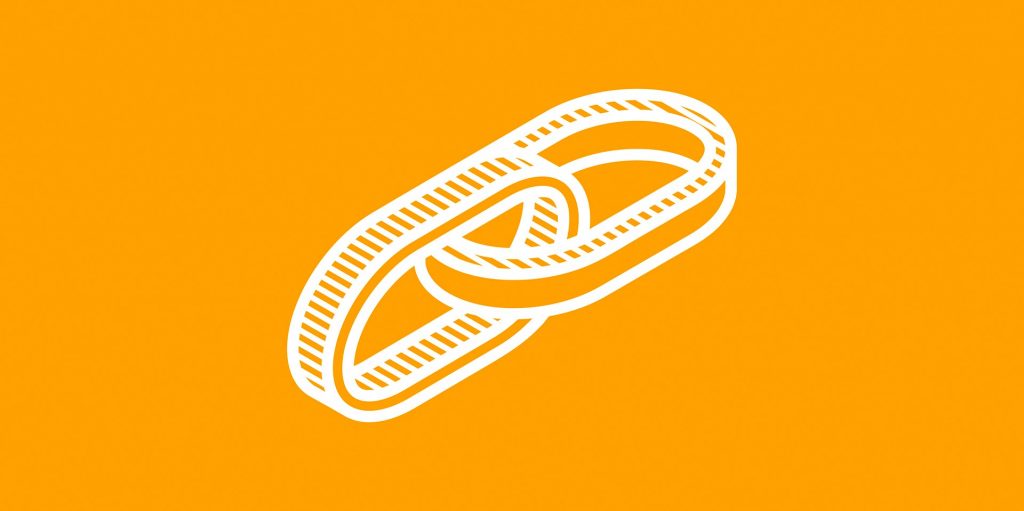
Better to ask users to interact with social media posts, for example, through actions and hashtags. However, posts that have been banned by Reaction Clickbait (“Love If You Know It”, “Like or Hate?”) Are now prohibited. They are ranked worse in the networks themselves and hidden in multiple violations. The purchase of forum links is also commonly considered dubious.
tip: Building backlinks via social media is not possible. However, an increase in traffic can be achieved
9. Analysis tools
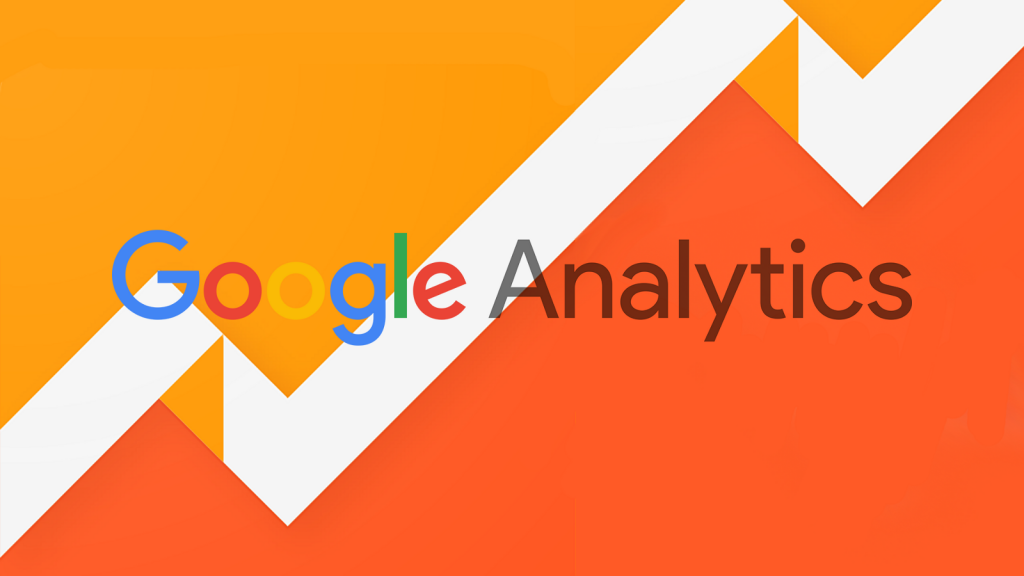
In its Search Engine Optimization Guide, Google looks at two ways to analyze web site search performance and behavior. These tools help to optimize the pages by identifying issues that hamper search engines in indexing web pages. On the other hand, it can be used to measure the effects of SEO measures. This section of the SEO Guide introduces these and other analysis tools that are useful for search engine optimization and discusses their application.
9.1 Which analysis tools does Google recommend?
It is hardly surprising that the leading search engine operator in its SEO guide essentially uses its own analysis tools, the Search Console, formerly called Webmaster Tools, and Google Analytics.
Prepare SEO with the Search Console
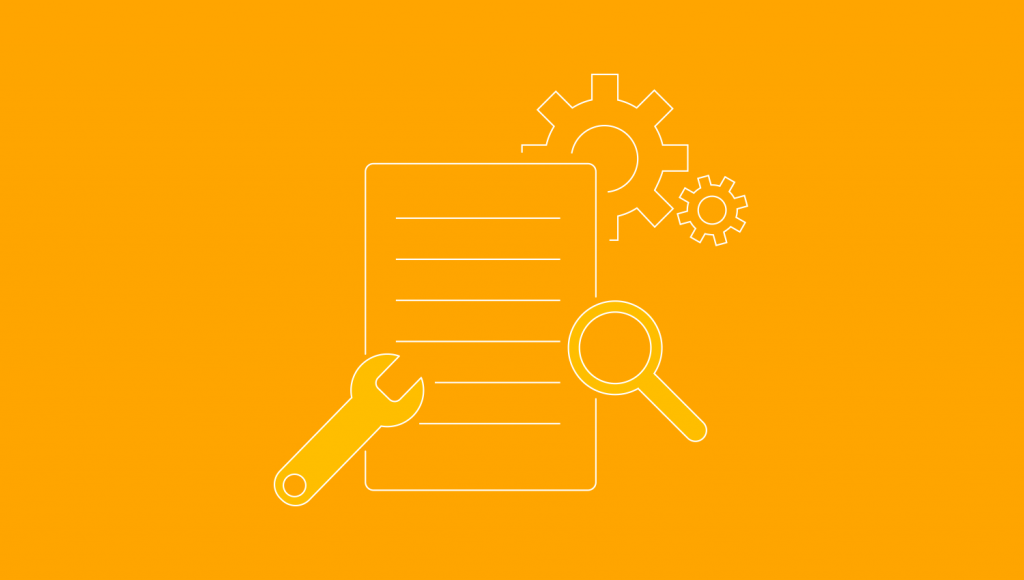
The Search Console offers first features for analyzing whether the bots of the search engine can find the published content at all. In addition, it provides information about the effect of the analyzed websites within the search engine. This means the following functions:
- Identify problem areas for crawling the site
- Provide and analyze crawl hinting in sitemaps, robots.txt files, and preferred domain names
- Presentation of web pages as the search engine sees them
- Examination of meta-title and meta-description information
- Determination of search queries, which preferentially direct users to the web pages
- Notifications for violation of quality guidelines of the search engine operator
- The requirement of a re-examination of the site after correcting the aforementioned problems
Measure SEO effects with Google Analytics

The second analysis tool from Google informs about the effect of the measures on the basis of the user behavior and its change. Of course, it also provides hints for further analysis. Relevant information is here on the ways in which users have come to a website, which parts of a website are of particular interest and how the number of accesses develops.
However, Google is increasingly upsetting its analytics users with organic search reporting. Instead of the search terms, the term “not supplied” is displayed in part. As a result, Google wants to protect the privacy of its own users.
9.2 Which analysis tools should be mentioned in the SEO Guide?
The analysis tools mentioned in Google’s Guidelines essentially serve the classic search engine optimization. They focus on queries with keywords and how search engines process them. Due to the growing importance, beyond areas should also be considered in SEO. These include, in particular, social media signals and new search methods such as web searches via voice input or via the cameras of mobile devices.

- SEO tools for analyzing social media
Social media signals are analyzed by tools like Buzzsumo, Ryte (On page) or Socialyser. The Like Explorer captures the number of likes of a website in popular social media channels. Impactana and Onalytica also focus on identifying relevant influenza.
- Search engine optimization with a view to voice and video search
Speech and visual searches do not necessarily require other SEO analysis tools, but a changed way of handling them. Spoken searches tend to be structured differently, longer, contain more keywords and often feature question words. In contrast, the search engine generates the request at the visual search entirely by itself, from the image content recorded by the camera.
9.3 Alternatives to the Google & Co analytics tools
Data from Google’s analytics tools are often limited, so we recommend using more tools. For good SEO, reporting is an important factor. Important KPIs can be easily observed and responded to developments. For example, OSG’s OSG Performance Suite combines data from key tools such as Google’s Seach Console, Google Analytics, Google AdWords, Sistrix, and more. With the app for Apple or Android can also be accessed on the go for daily evaluations from the SEO, SEA, web controlling, etc.
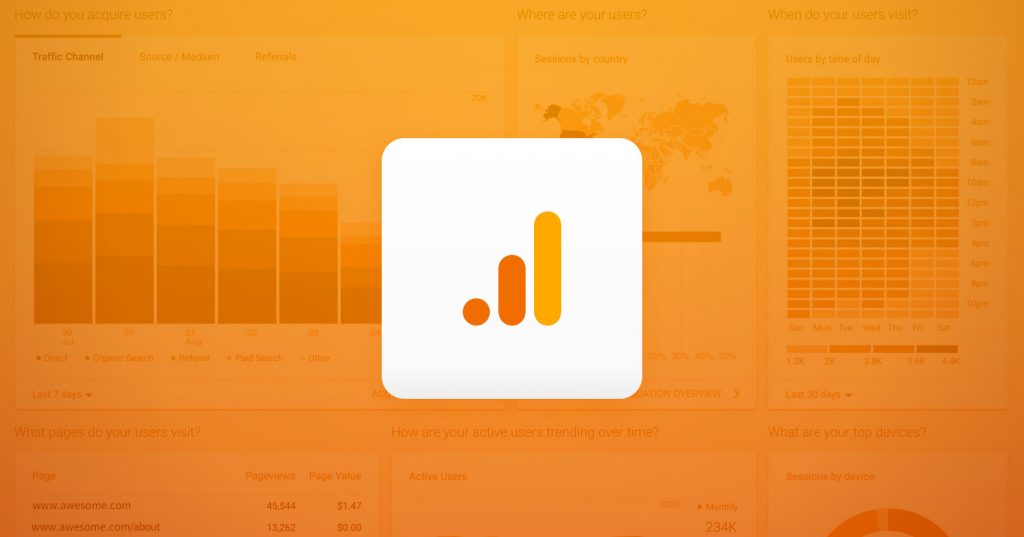
In addition, OSG’s free SEO onPage Check provides an opportunity to review technical factors related to Google’s compliance.
We have dedicated our own blog article to the topic of SEO Reporting. It explains why SEO reporting is so important. In addition, some tools are presented.
SEO Guide Conclusion

Now you know the most important parts of search engine optimization. If you follow these tips and implement them, you have made the first step towards a better ranking. However, search engine optimization is not a one-off business but requires ongoing attention. If you want to read further in the topic, I recommend you our list of the best SEO books.


